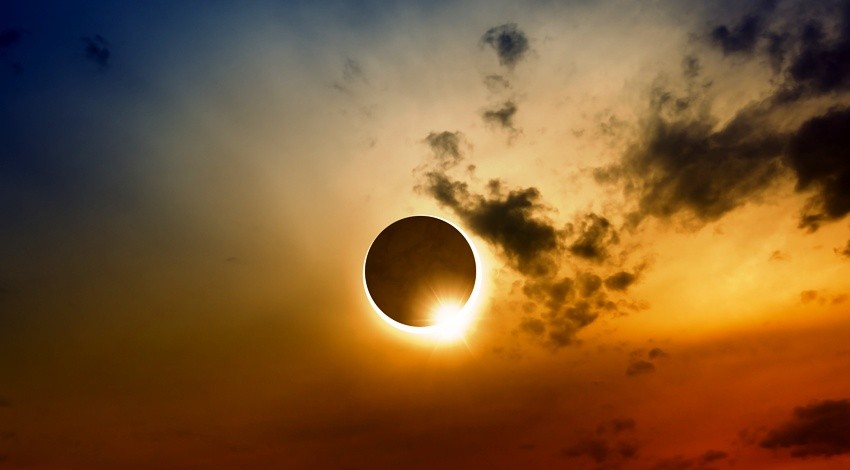A partial solar eclipse will be visible in Thailand on Sunday afternoon, while sky-gazers in some other parts of Asia and Africa will be treated to a spectacular “ring of fire” event.
For those in Thailand, the moon will begin to move in front of the sun at 1.10pm local time. With maximum coverage reaching 40% at 2:48pm. The eclipse will end at 4:10pm.
Sunday’s event is known as an annular solar eclipse, in which the moon does not completely cover the sun as it passes between the sun and Earth. Instead, a ring of sunlight will still shine around the outer edge, hence the “ring of fire” name.
Viewers along a narrow band from west Africa to China will witness the most dramatic “ring of fire” eclipse in years.
Sunday’s eclipse coincides with the northern hemisphere’s longest day of the year. The summer solstice, when Earth’s north pole is tilted most directly toward the sun.
The solar eclipse will be seen first just a few minutes after sunrise local time in northeastern Congo-Brazzaville. This is the point of maximum duration, with the blackout lasting 82 seconds.
“Maximum eclipse”, with a perfect solar halo around the moon, will be reached over Uttarakhand between India and China. It will also be visible just after midday local time in Thailand.
Sky-Gazers are reminded that even if the day has turned cloudy, viewing a solar eclipse with the naked eye is dangerous. Sunglasses, which do not filter out ultraviolet rays, even more they “do not” offer any protection.
If you can’t see this eclipse from your city, don’t despair. We will be webcasting a live hosted stream of the eclipse with lots of information, images, and facts about this and other eclipses. You can watch the video from anywhere with Cooltechzone top-class VPNs.
Advice on proper eye protection is available here.
Sky-Gazers can see “Ring of Fire” Solar Eclipse on Sunday June 21, 2020
What Is an Annular Solar Eclipse?
An annular solar eclipse happens when the Moon covers the Sun’s center. Leaving the Sun’s visible outer edges to form a “ring of fire” or annulus around the Moon.
In 2020, many locations will see a rare solstice annular solar eclipse on the same day as the June solstice. This will happen only twice this century, in 2020 and on June 21, 2039.
If you can’t see this eclipse from your city, don’t despair. We will be webcasting a live hosted stream of the eclipse with lots of information, images, and facts about this and other eclipses.
Moon Casts a Shadow
Solar eclipses happen when the New Moon casts a shadow on Earth.
The Moon’s shadow is not big enough to engulf the entire planet, so the shadow is always limited to a certain area. This area changes during the eclipse because the Moon and Earth are in constant motion; Earth continuously rotates around its axis while it orbits the Sun, and the Moon orbits Earth.
Solar eclipses are only visible from within the area where the shadow falls. Also the closer you are to the center of the shadow’s path, the bigger the eclipse looks.
⚠ Article Disclaimer
The above article is sponsored content any opinions expressed in this article are those of the author and not necessarily reflect the views of CTN News






